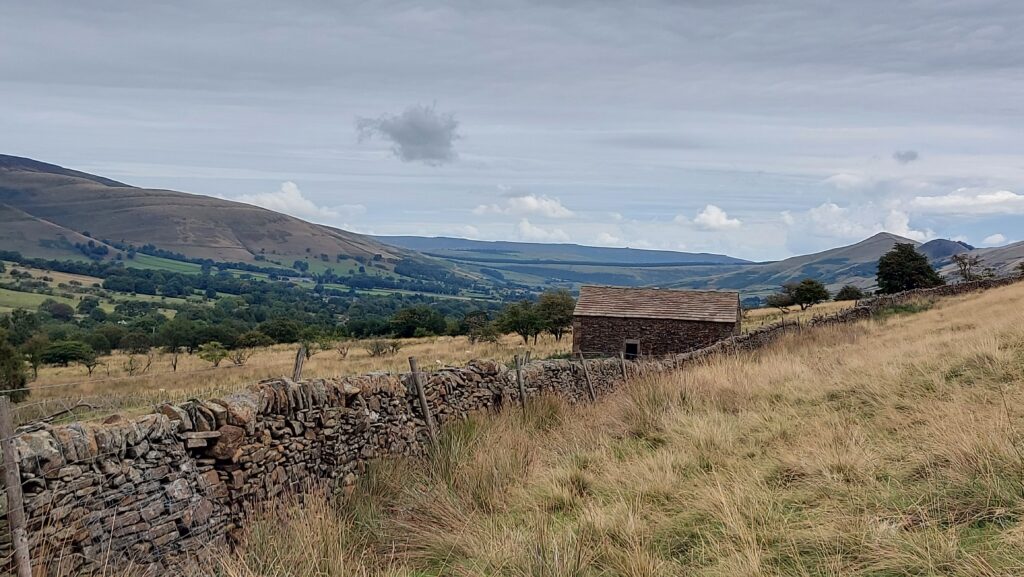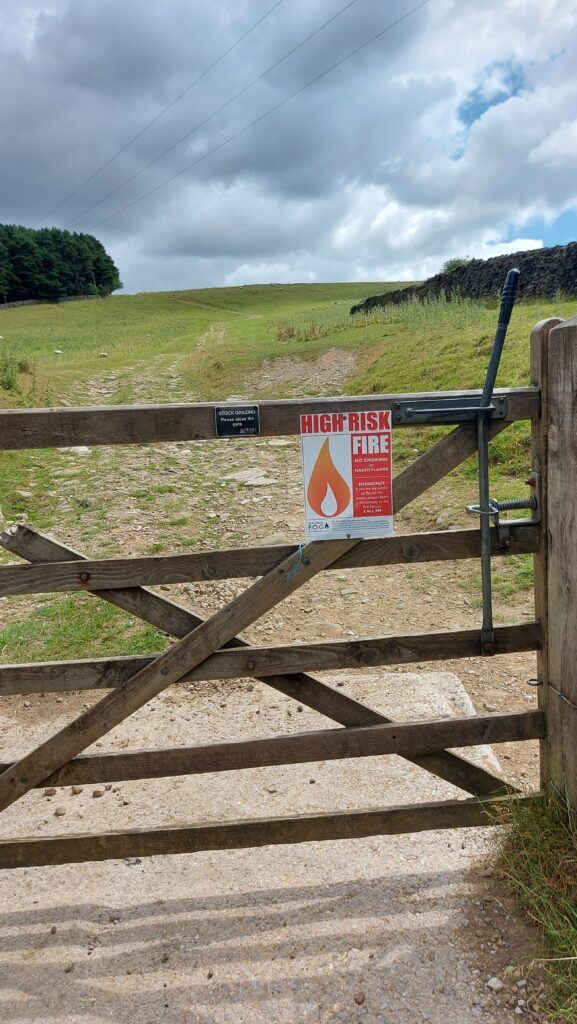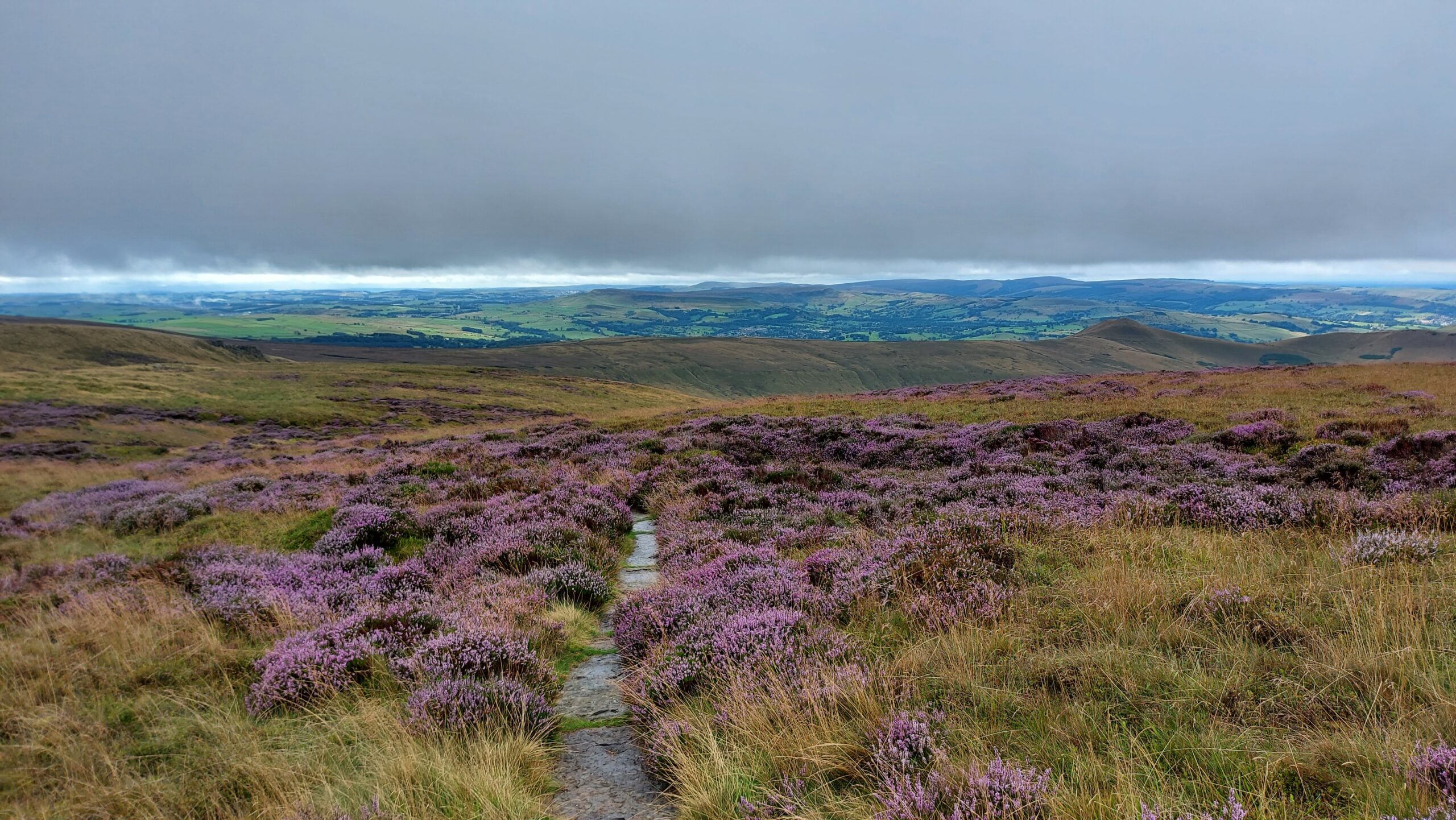Where did you go and what did you do?
I worked for the National Trust as an Assistant Ranger in the High Peak. The role was very practical, and combined manual labour in a countryside context, practical conservation and relationship management with all the people who live, work and visit the land.
The work was incredibly varied and responsive. Many days were devoted to maintenance of borders either through fencing or drystone walling. Borders must be stock proof to keep farmer’s livestock in for their own safety and the safety of vehicles and trains. They also become damaged frequently by time, weather, falling trees, car accidents and indeed cows deciding to plough through them. There were conflicting interests at times in these cases, for example farmers being unhappy with a change in the gates along bridleways that conflicted with the Trust’s inclusivity policies to install more accessible gates. Another such instance occurred when a fence replacement was needed on a farm, but badgers had created a set along the fence line and badger protection states that the ground cannot be disturbed within 10 meters of a badger set. However, the border needs to be stock proof and cannot be moved further into the field as this would create loss of income for the farmer. Yet we needed to be responsible towards the badgers, so alternative fencing solutions had to be found.

Much of the work involved conservation and preservation of the land. Kinder Scout has a massive peatland conservation project ongoing. I was able to see the progression of sites from 20 years back that had blocked water gullies and a variety of vegetation planted including sphagnum moss and cotton grass. This created good conditions for water retention, peat conservation and peat growth. Other conservation was aimed at reducing erosion from tourism, particularly important around Mam Tor. Not only is this an incredibly popular site, to the point that ‘desire lines’ that veer off the main paths cause scars on the landscape, but due to the geology the whole hillside is slipping. This is also what is currently happening to snake pass. My third example is caused by a combination of climate change and irresponsible tourism. We had severe drought most of the summer and record temperatures in July and August which meant the fire risk was extreme. Some of my time was spent on fire patrol, watching the land for signs of smoke so that any fire could be responded to quickly, responding to reports of BBQs which were banned during this time, and encouraging people to stay away from the moors in extreme heat. There were 3 fires this summer all caused by disposable BBQs. While none were technically on National Trust land, it is still devastating.

What made you want to do that particular placement?
Prior to this placement I spent a lot of time in the peak district. My main motivations were that I wanted to give back and help maintain the land and I wanted skills and contacts in a more practical field, to contrast the laboratory and analytical skills that I’ll gain from my PhD.
It’s important to keep doors open for alternative career paths, and I wanted to see whether my project management skills could fit into an organisation such as this.
How did you go about finding and planning your PIPS?
Charitable organisations such as the National Trust rely heavily on volunteer work. I went through the volunteering channels and asked to be put in contact with a group based in the peak district. From there I organised the placement with the area Ranger for the high peak directly.
What have you gained from doing your PIPS?
I’ve gained many practical conservation and countryside skills I would never have otherwise had access to – for instance dry stone walling is a dying trade. I also learned a great deal that could be helpful as a scientist if I ever undertake field work in challenging environments – such as building shelters and storage with second hand or minimal materials and driving a vehicle off road. I learned a lot about managing groups of people who represent different interests and the challenges and conflicts this can produce. Resolving these issues involved problem solving, compromise and presenting information differently, appropriate to the audience that was receiving it.
How would you sum up your PIPS experience?
During my experience I found myself on the back foot for a while at the beginning as I came up the learning curve, but then grew to be an incredibly enjoyable job as you could see the difference your efforts made in the land. It was a joy to work outdoors for 3 months and I was part of an incredibly lovely team of people.
What advice would you give to other PGRs about PIPS?
Choose something completely different to what you do as a researcher. It’ll open your eyes to how adaptable you can be and give you confidence in your transferable skills.

